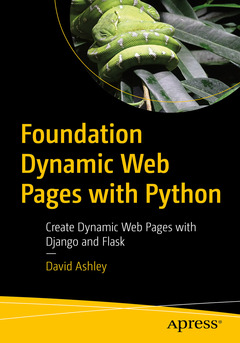Chapter 1: Introduction to Web Servers
Chapter Goal: An introduction to web servers – specifically the Apache web server.
No. of Pages: 5
Sub-Topics:
Glossary of terms
Introduction to the Apache web server
Introduction to other web servers
Configuring your web server
Organizing your web server
Chapter 2: HTML Pages and CSS
Chapter Goal: Describes the main principles of web pages and style sheets
No. of Pages: 20
Sub-Topics:
HTML tags
Organizing HTML sections
Linking HTML pages to a style sheet
Creating a library of partial HTML pages
Ensuring coordination between the HTML page, the CSS stylesheet, and you library
Chapter 3: Using CGI and Python
Chapter Goal: Using Python to create an HTML page
No. of Pages: 25
Sub-Topics:
Configure CGI for use by Python
Create a dummy page just for creating the layout of the page major elements
HTML sections
Using Python to create a dynamic HTML page
Where to split a web page into multiple parts
Techniques for managing the web page for use by Python
The good and the bad of using CGI
Chapter 4: Using SSI and Python
Chapter Goal: Configure Apache for use by SSI and Python
No. of Pages: 45
Sub-Topics:
Configure SSI for use by Python
Create a dummy page just for creating the layout of the page major elements
HTML sections
Using SSI and Python to create a dynamic HTML page
Where to split a web page into multiple parts
Techniques for managing the web page for use by SSI and Python
The good and the bad of using SSI
Chapter 5: Using Django and Python
Chapter Goal: Using Django and Python to create an HTML page
No. of Pages: 40
Sub-Topics:
Configure Apache for use by Django and Python
Create a dummy page just for creating the layout of the page major elements
HTML sections
Using Django and Python to create a dynamic HTML page
Where to split a web page into multiple parts
Techniques for managing the web page for use by Django and Python
The good and the bad of using Django
Chapter 6: Using Flask and Jinja
Chapter Goal: Using Flask and Python to create an HTML page
No. of Pages: 40
Sub-Topics:
Configure Apache for use by Flask and Python
Create a dummy page just for creating the layout of the page major elements
HTML sections
Using Flask and Python to create a dynamic HTML page
Where to split a web page into multiple parts
Techniques for managing the web page for use by Flask and Python
The good and the bad of using Flask
Chapter 7: Comparing CGI, SSI, Django, and Flask
Chapter Goal: Choosing the correct dynamic page creation system
No. of Pages: 50
Sub-Topics:
List the advantages of each system
List the disadvantages of each system
Chapter 8: Usage Options - CGI, SSI, Django, and Flask
Chapter Goal: Choosing the correct dynamic page creation system
No. of Pages: 50
Sub-Topics:
Discuss options for using multiple systems
Some things to remember




